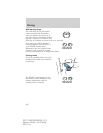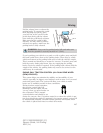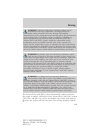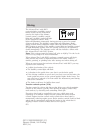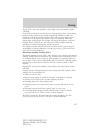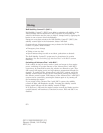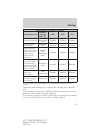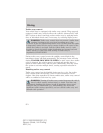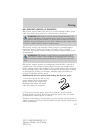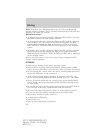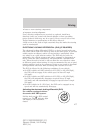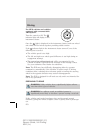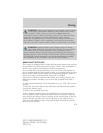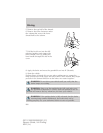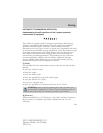
Trailer sway control
Your vehicle may be equipped with trailer sway control. When properly
equipped, trailer sway control will use the vehicle’s AdvanceTrac with
RSC system to detect and help reduce trailer sway by applying brake
force at individual wheels and, if necessary, by reducing engine power.
WARNING: Trailer sway control does not prevent a trailer from
swaying, it mitigates the sway from increasing once it has
occurred. If you are experiencing trailer sway it is likely that the trailer
is improperly loaded for the correct tongue weight or the speed of the
vehicle and trailer is too high. Pull the vehicle-trailer over to a safe
location to check the trailer weight distribution and tongue load and
reduce speed to a safe level while towing. If trailer sway is
experienced, SLOW DOWN.
During trailer sway control events the stability control light in the
instrument cluster will flash momentarily. The message center will also
display TRAILER SWAY REDUCE SPEED. In some cases when trailer
sway is detected, the vehicle speed is too high and may be above a
speed at which trailer sway will not grow continuously. This may cause
the system to activate multiple times, causing a gradual reduction in
speed.
Disabling trailer sway control
Trailer sway control can be disabled during any key cycle. See trailer
sway control under the Message center in the Instrument Cluster
chapter. Note that regardless of chosen enable state, trailer sway control
will be re-enabled at each new key cycle.
WARNING: Turning off trailer sway control increases the risk of
loss of vehicle control, serious injury, or death. Ford does not
recommend disabling this feature except in situations where speed
reduction may be detrimental (e.g., hill climbing), the driver has
significant trailer towing experience, and can control trailer sway and
maintain safe operation.
Driving
274
2011 F-250/350/450/550 (f23)
Owners Guide, 1st Printing
USA (fus)



